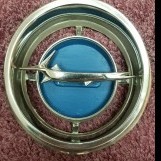Light Weight Foot Digger In The Works
-
Similar Content
-
- 1 reply
- 317 views
-
- 38 replies
- 2,129 views
-
- 17 replies
- 1,854 views
-
- 17 replies
- 2,107 views
-
- 11 replies
- 1,252 views
-
- 24 replies
- 2,227 views
-
-



.thumb.jpg.8761b3d9b3da119b9e6d1912f67275ad.jpg)




Recommended Posts
Create an account or sign in to comment
You need to be a member in order to leave a comment
Create an account
Sign up for a new account in our community. It's easy!
Register a new accountSign in
Already have an account? Sign in here.
Sign In Now